The Pole Pass retreat is much more than a lake house, and much more than what meets the eye.
Densely wooded land crawling along the coasts of the island hug the property and help it to serve as the perfect intimate retreat for a family gathering or group of friends. The location takes great advantage of the majestic, mild Pacific Northwest summers on the San Juan Islands – a group of islands that sit between Seattle, Washington and Vancouver, British Columbia with the Hard Strait on one side and Rosario Strait on the other.
This waterfront property is placed in such a way it meets with the very typical landscape of the Pacific Northwest and directs visitors to the property to look out not only across the meadow, but also into the harbor.
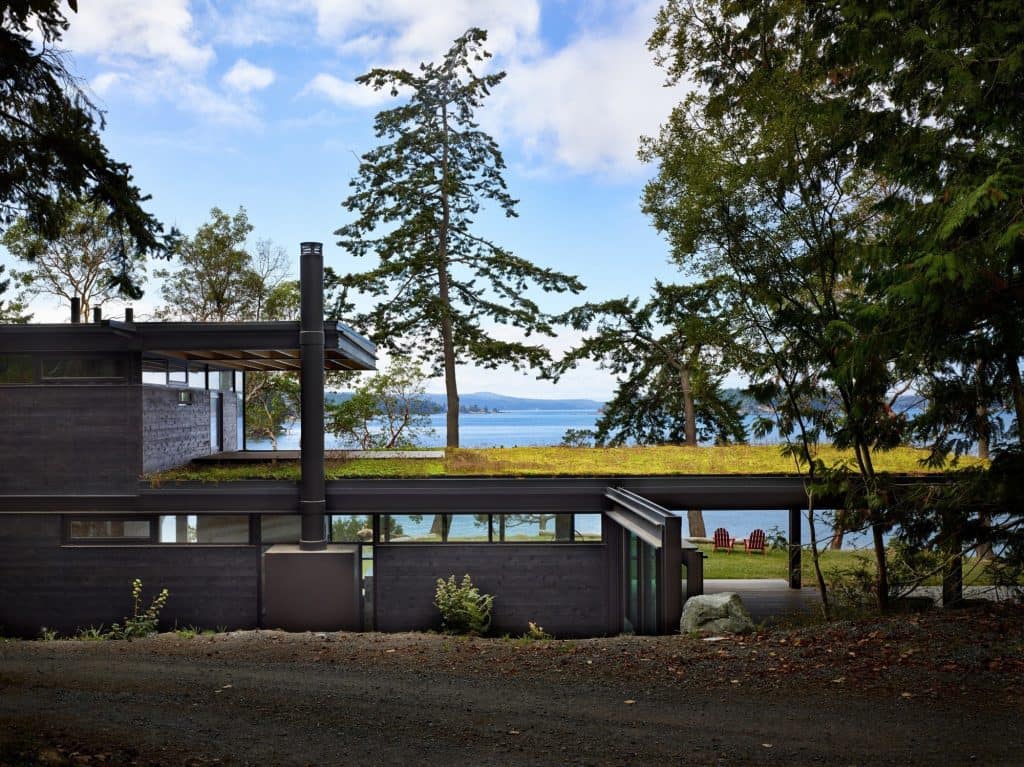
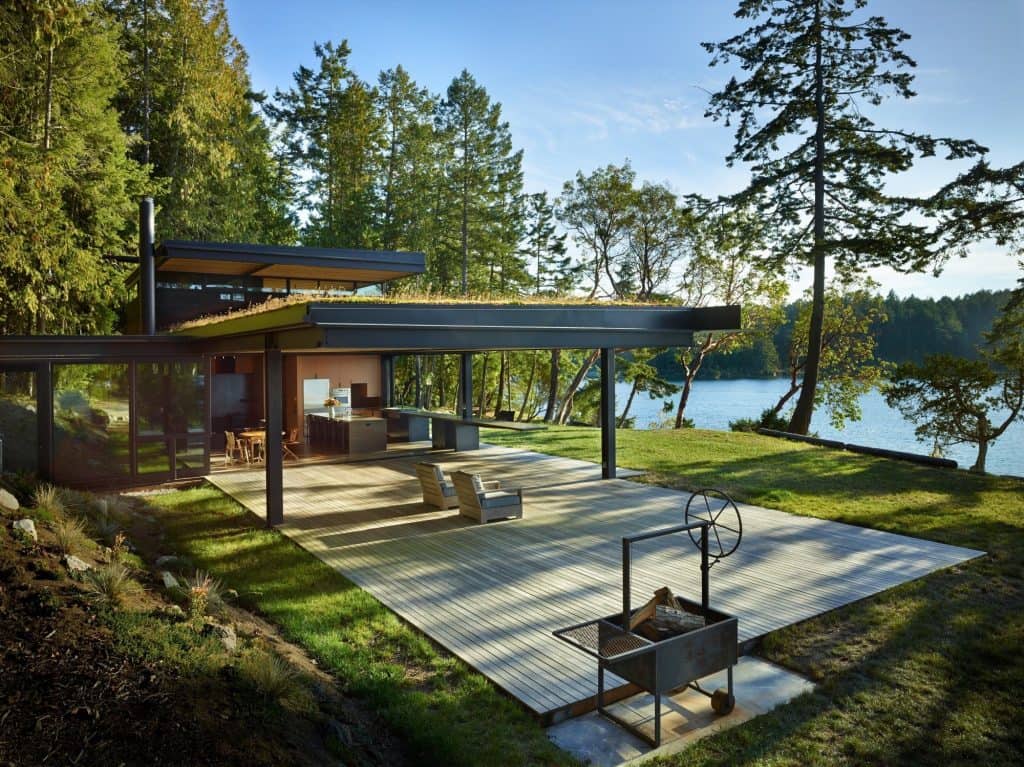
Designed by Seattle-based architectural firm Olson Kundig, the Pole Pass Retreat uses horizontal proportions to blend into its surrounding. One of the signature and most notable features of the waterfront property is its slightly charred cedar side. The siding is done with a traditional Japanese method called “shou-sugi-ban.” The method preserves the wood naturally by assuring the cedar is less of a target for insets, fire, and rot. Shou-sugi-ban gives the wood a very dark, slightly silvery color which, over time, changes.
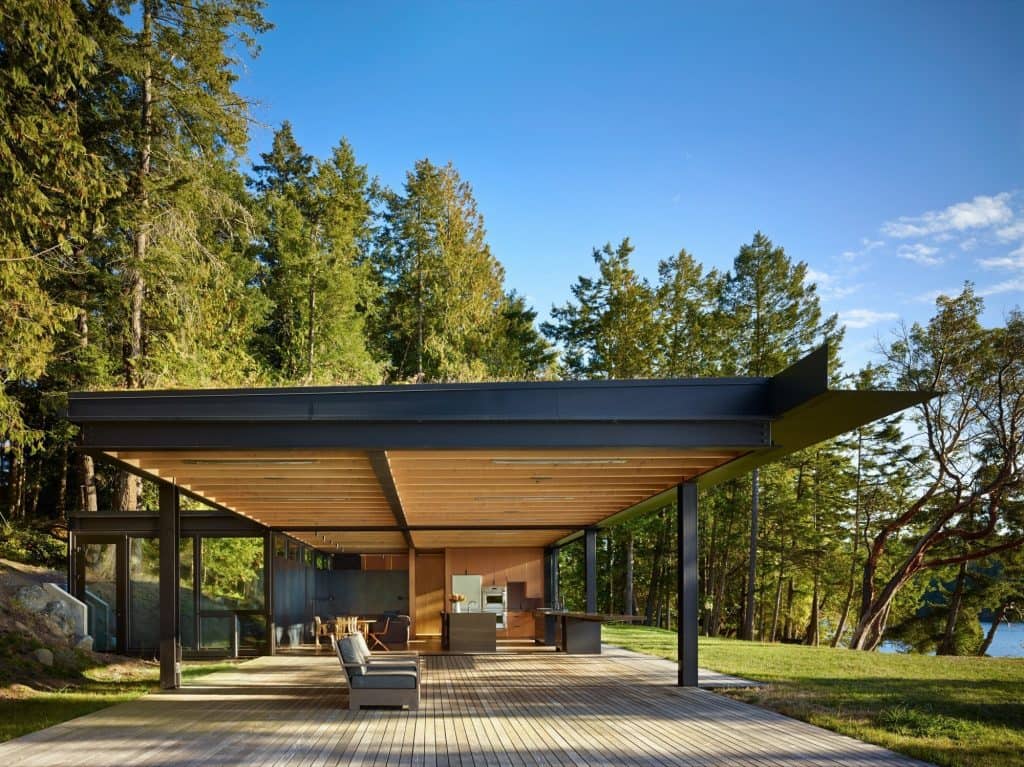

Kundig designed the space so that visitors could maximize from flexibility as much as possible while also allowing the site to be usable in all four seasons. The pavilion window walls can practically be opened up during the warmer months by the use of a walk-along hand wheel. This helps the property accommodate a large crowd. It also fades the line between the structure and the site to make an indoor/outdoor living space that is expansive with great views.
SEE MORE: The Rodney Walker Residence Takes Full Advantage of its 270 Degrees Hilltop View
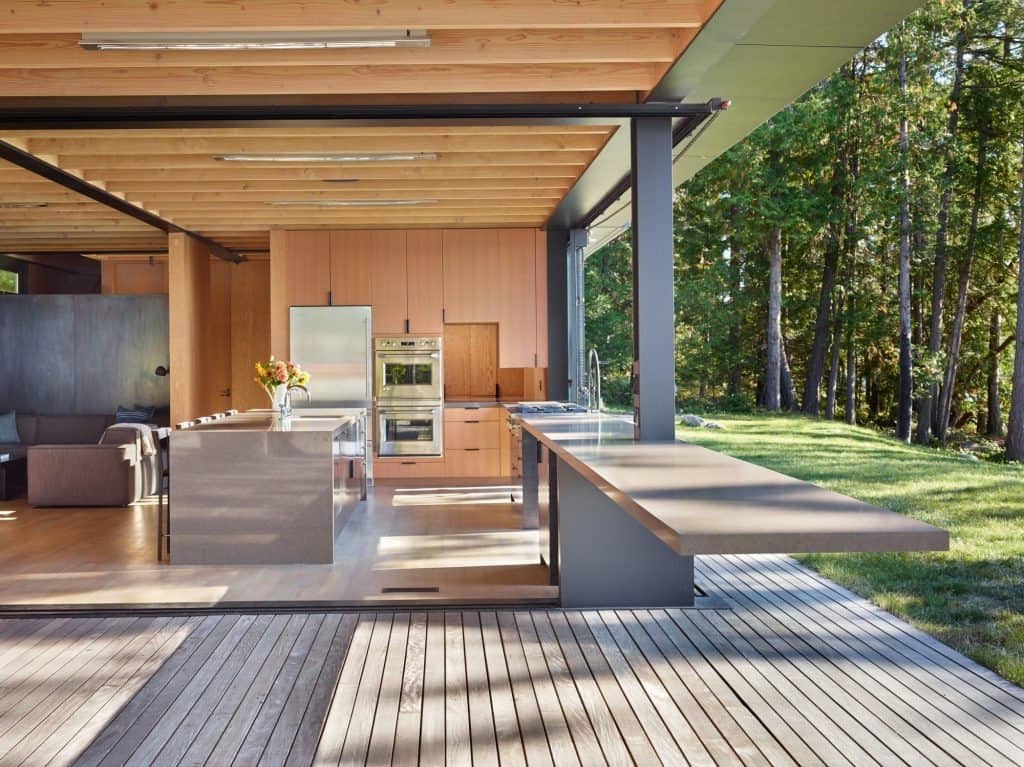
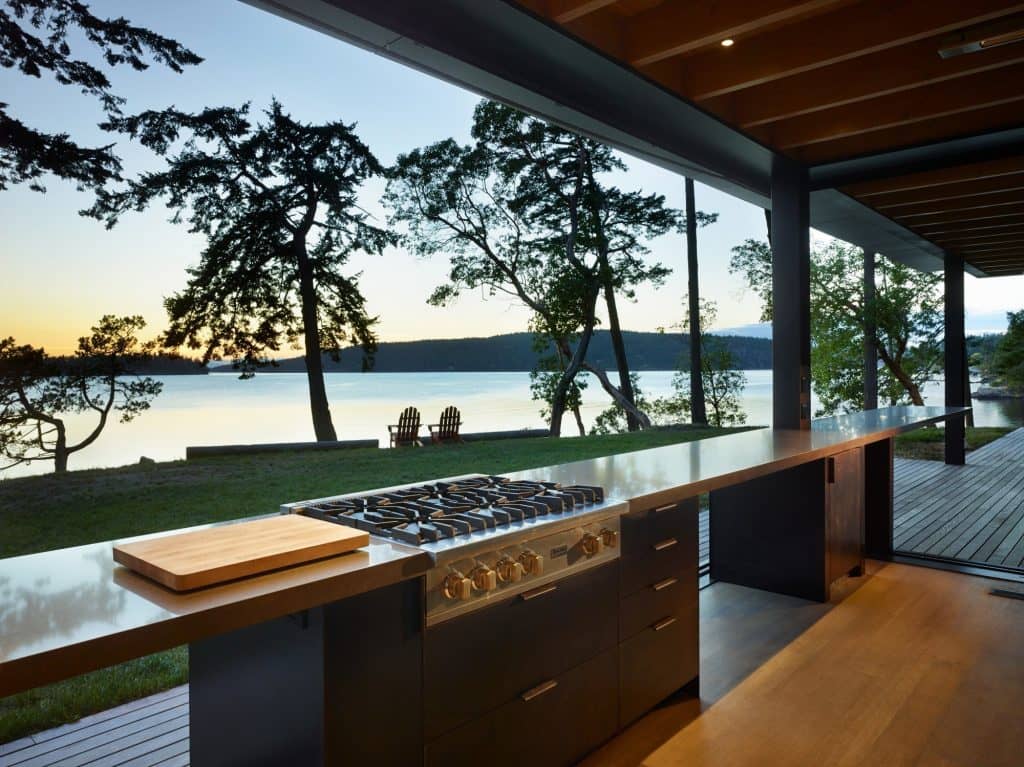
Like many modernists concepts, the interior and exterior overlap to become one and the same. The kitchen counter, which is cantilevered, for instance, reaches out onto the deck and offers the great connection of food with company outside.
The nine-foot-tall glass walls, of which the largest wall is a massive 20 feet long, move easily. A hand-cranked wheel that is connected to a set of gears and chains is used in making this possible. The window walls, when open, connect the living and kitchen spaces with the impressive and expansive deck – a deck whose size is almost equal to that of the structure.
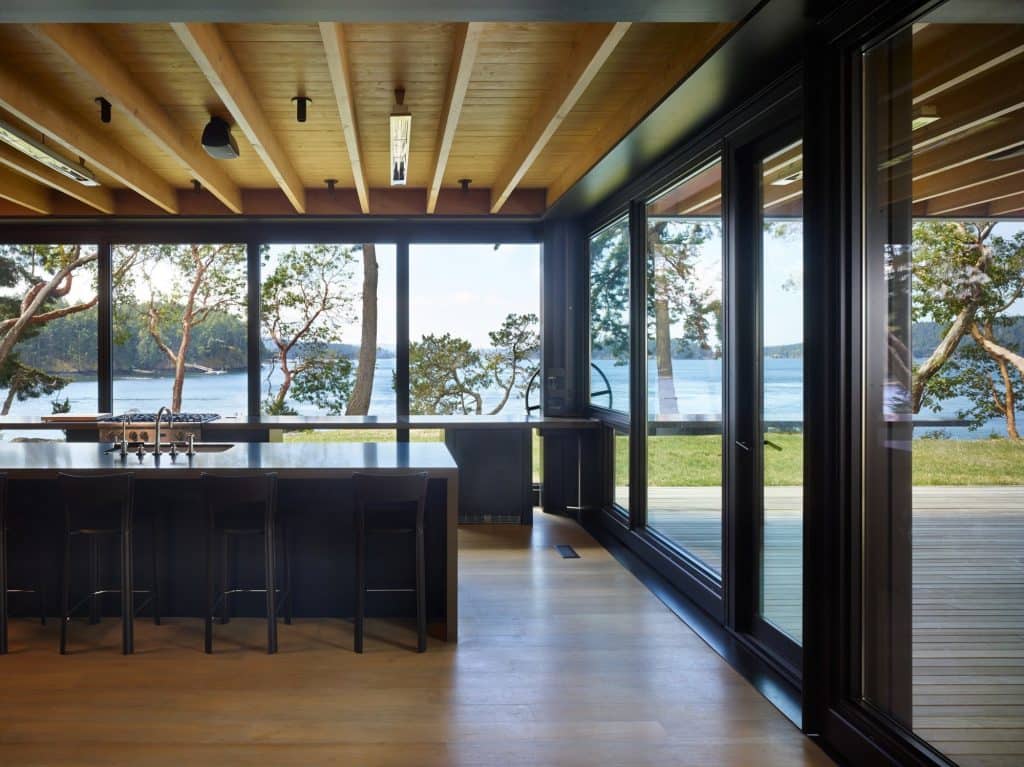
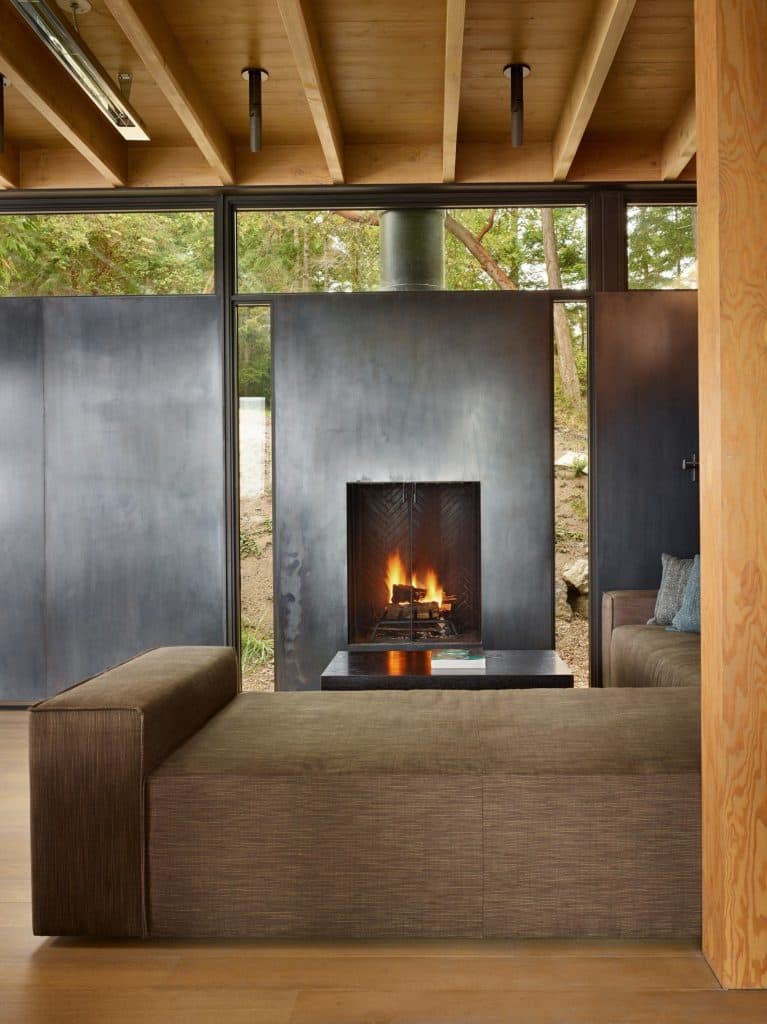
The property’s only bedroom further exemplifies the concept of flexibility. In it, the Murphy bed can pop out, making it a great place for a sleepover with kids. The property is also designed in such a way to be an escape. From the bedroom, which is on the second level, a visitor’s eyes will set on the green roof that acts as a little “meadow.”
SEE MORE: Richard Neutra’s Kaufmann House
This meadow gives a great mount of privacy by blocking the view from the public spaces below. Juxtaposed with a gentle pallet of pine with wood rafters that are exposed across the space for an interior, the exterior is a hard shell of steel and charred siding.
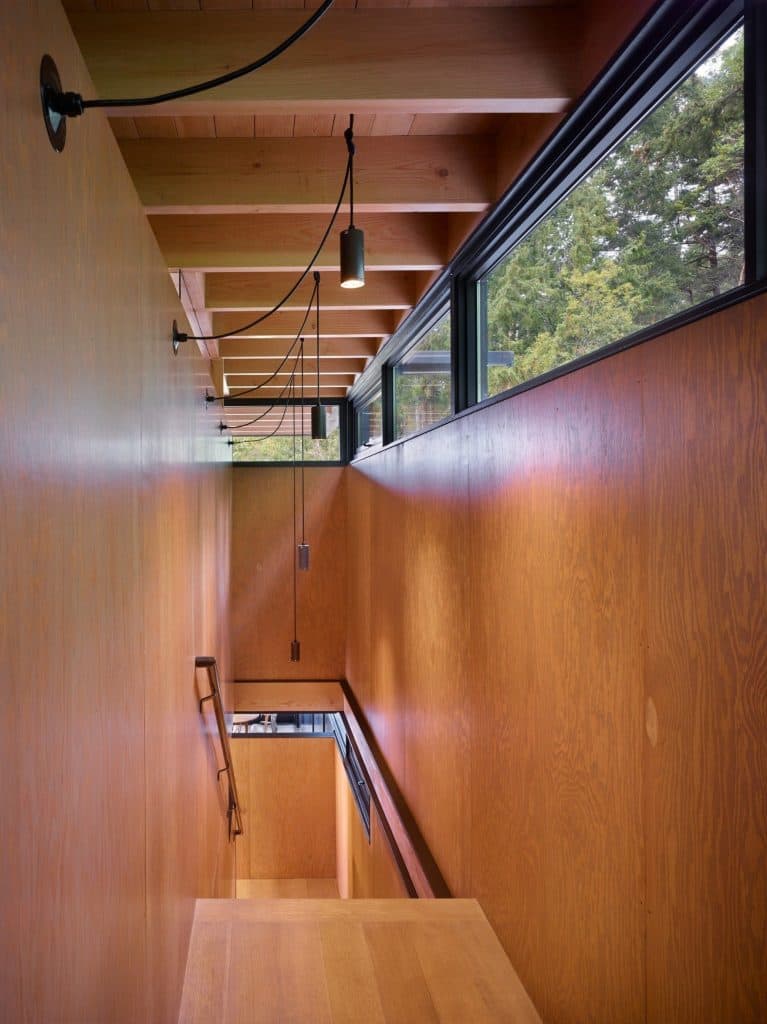
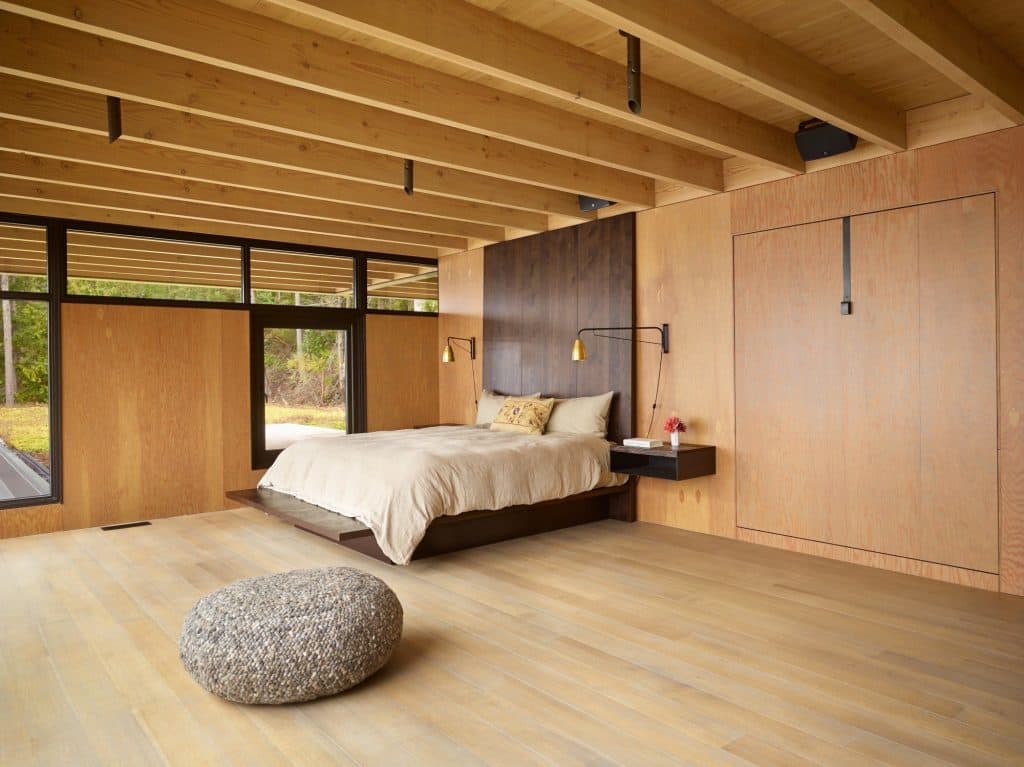
Photos via Olson Kundig